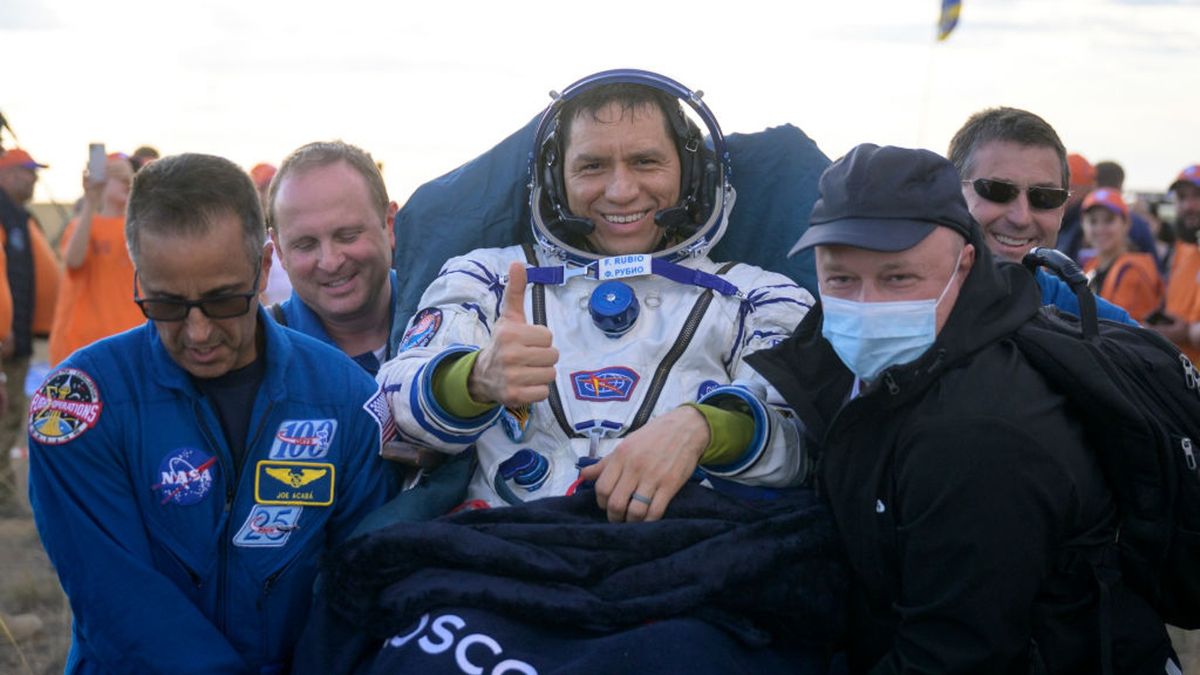
Dr. Frank Rubio, the first American astronaut to live in space continuously for more than a year, has returned to Earth. He spent 371 consecutive days on the International Space Station (ISS), eclipsing the nearly yearlong stints of astronauts Mark Vande Hei (355 days) and Scott Kelly (340 days). The record-setting trip was more than twice as long as originally scheduled.
Rubio, along with Russian cosmonauts Sergey Prokopyev and Dmitri Petelin, touched down in rural Kazakhstan on Sept. 27. They were pulled out of their Soyuz capsule and carried away because they were unable to walk due to their extended stay in microgravity.
Rubio, Prokopyev and Petelin arrived on the ISS aboard a Soyuz capsule on Sept. 21, 2022. They were due to return to Earth on March 28 but had to remain in space after their spacecraft was hit by a piece of space junk or meteoroid in December 2022, which caused an uncontrollable radiator leak. The unrepairable capsule was returned to Earth and was replaced by another uncrewed capsule in February, which the trio used to return home.
Due to other scheduling conflicts, Rubio, Prokopyev and Petelin had to remain aboard the ISS until now. But Rubio’s extended stay provides an unexpected opportunity to learn more about prolonged spaceflight.
“Frank’s record-breaking time in space is not just a milestone; it’s a major contribution to our understanding of long-duration space missions,” NASA Administrator Bill Nelson said in a statement. “He embodies the true pioneer spirit that will pave the way for future exploration to the Moon, Mars, and beyond.”
Related: Why does NASA let male astronauts stay in space longer than females?

The previous record spaceflight by an American was held by Vande Hei, who spent 355 consecutive days on board the ISS between 2021 and 2022. But the longest-ever consecutive time spent in space was a whopping 437 days, which was set by cosmonaut Valeri Polyakov between 1994 and 1995.
During his mission, Rubio completed approximately 5,936 orbits of Earth, which equates to around 157 million miles (253 million kilometers), or roughly 328 trips to the moon and back, according to NASA. He also carried out three spacewalks totaling around 21 hours and had 28 different crewmates on the ISS.
In a Sept. 19 interview on board the ISS, Rubio explained that it had been hard to be away from his family for such a long time but that he had tried hard to “stay positive” during his extended mission. “You try to just focus on the job and on the mission and remain steady, because ultimately, every day, you have to show up and do the work,” he said.
Related: How long could a person survive in space without a spacesuit?
Rubio conducted a variety of scientific experiments during his time in space, including testing how bacteria behave in microgravity. But his favorite experiments were carried out on a tomato plant. “I love working with that little plant and seeing it grow and develop,” he said.
It will be particularly interesting to see how well Rubio adjusts to life back on Earth. Prolonged time in space can cause muscle degeneration, bone loss, reduced eyesight and impaired balance, and can even change the shape of the brain. The recent record-breaking mission was Rubio’s first time in space, which means his body has not experienced any of these issues before. He predicts that it could take two to six months to feel completely normal again.

